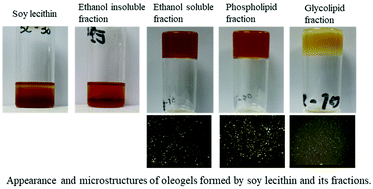Oil-gelling properties of soy lecithin fractions
Abstract
Lecithin is a mixture of amphiphilic lipids with health benefits. In this study, four different fractions (ethanol soluble, ethanol insoluble, phospholipid and glycolipid fractions) from soy lecithin were obtained and evaluated as oleogelators. As with the parent lecithin, the ethanol insoluble fraction (EIF) was unable to function as an oleogelator. The ethanol soluble fraction (ESF) and phospholipid fraction (PLF) formed oleogels at 30% (wt%), while the glycolipid fraction (GLF) formed oleogels at 15%. ESF resulted in an oleogel with a similar appearance and microstructure, but a harder and less cohesive texture than the PLF-supported oleogel. The oleogels formed with GLF were different from those formed with ESF and PLF in appearance and microstructure. GLF at 20% formed an oleogel with better texture characteristics (in the light of hardness) and oil-holding capacity than those formed with 30% of ESF and PLF. This is the first study to investigate the oil-gelling properties of fractions from soy lecithin. Our results show that the naturally occurring glycolipids from soy lecithin exhibit great potential as oleogelators.



 Please wait while we load your content...
Please wait while we load your content...